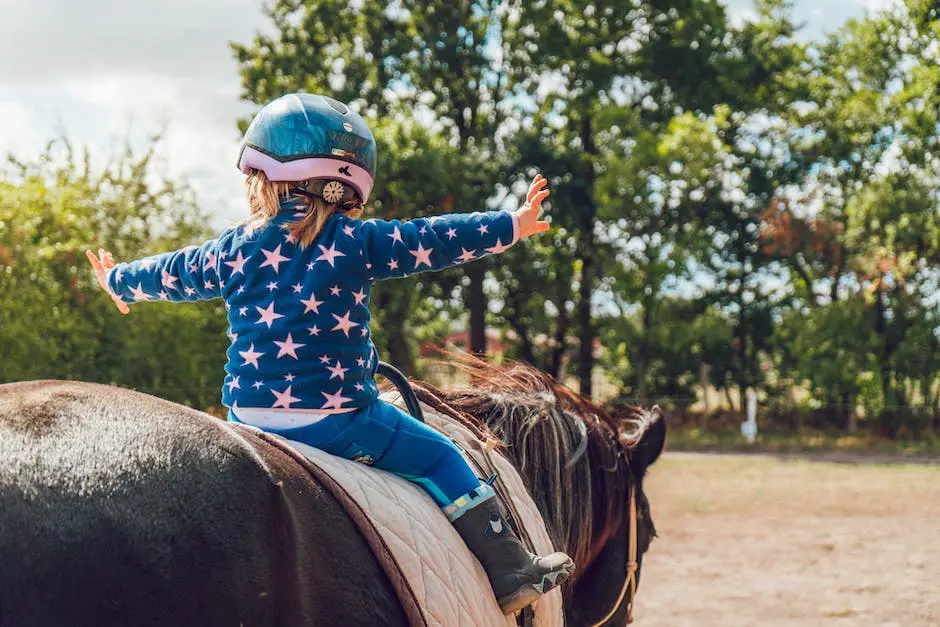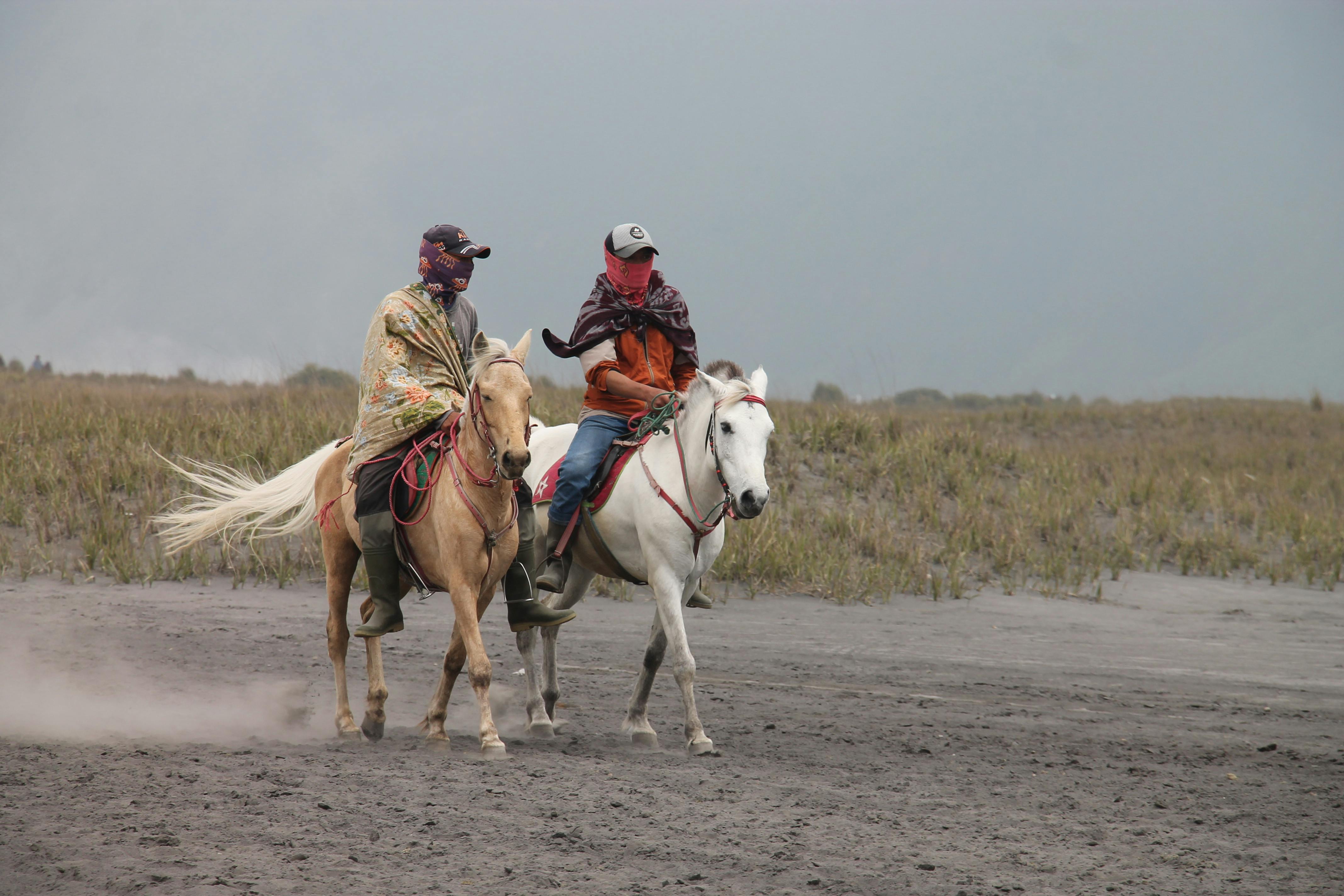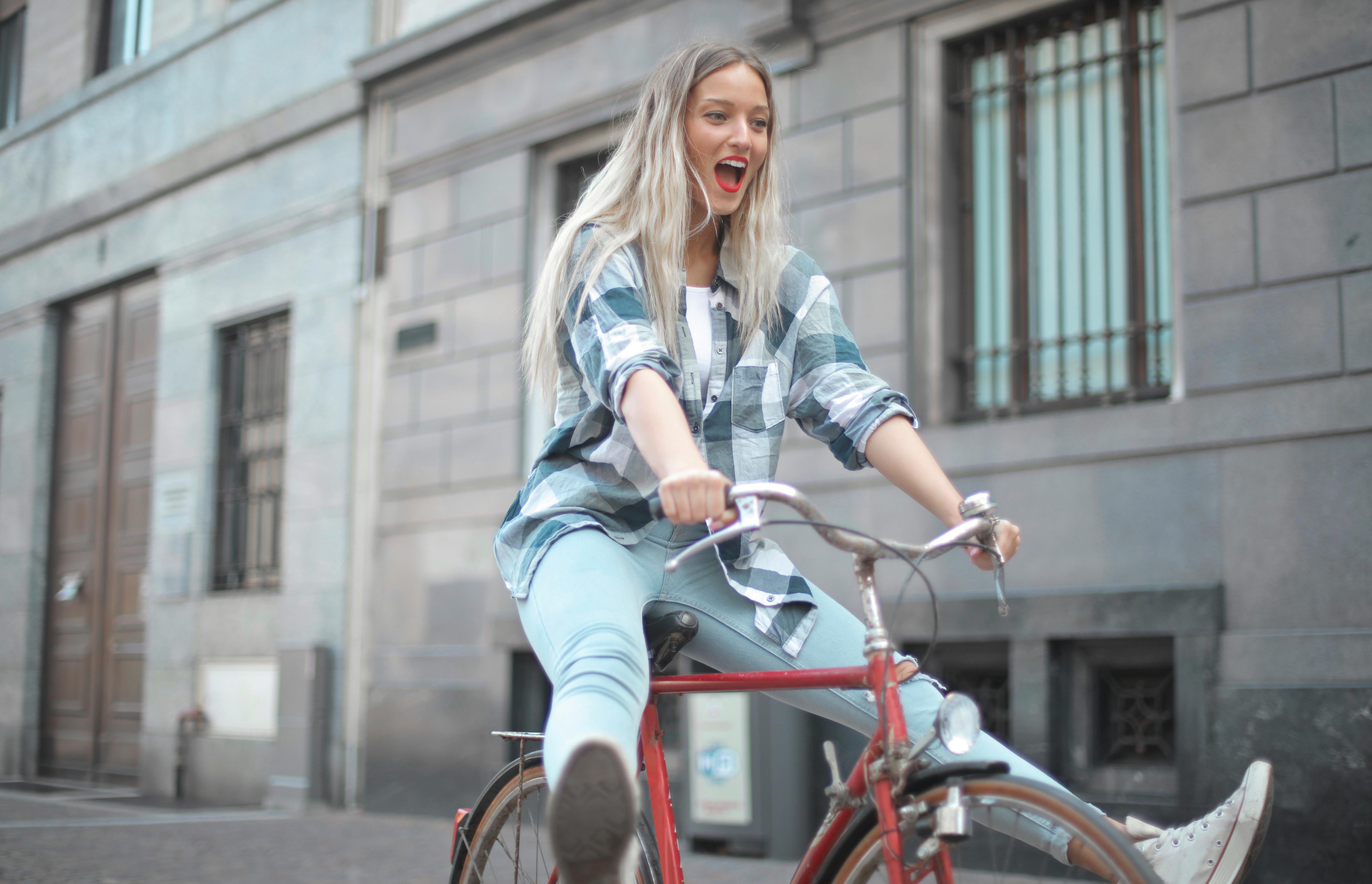What To Wear When Horseback Riding

Horseback riding is a fun and popular activity that can be enjoyed by both adults and children. It is important to make sure that you are properly outfitted when horseback riding, as it can have an effect on your overall comfort, safety, and ability to perform. In this article, we will discuss what to wear when horseback riding and the importance of having the right attire for the activity.When it comes to horseback riding, the most important thing to wear is a riding helmet. It should be snug enough to stay on your head without being too tight, and should have a harness that is properly fitted and fastened. Additionally, you should wear long pants (preferably jeans) and closed-toed shoes with a low heel. If it’s sunny outside, consider wearing a long sleeve shirt and sun hat for extra protection. It’s also a good idea to wear gloves for extra grip on the reins. Finally, make sure to bring an extra layer in case it gets cold while you’re out riding.
Essential Clothing Items For Horseback Riding
Horseback riding is a popular outdoor activity enjoyed by many people of all ages. Whether you’re a beginner or an experienced rider, it’s important to have the right clothing and equipment to ensure you stay safe and comfortable. Here are some essential clothing items for horseback riding:
Helmet: A helmet is the most important piece of safety equipment for any horseback rider. It is designed to protect your head from falls and other potential injuries, so make sure you purchase one that fits properly and meets safety standards.
Boots: Riding boots are essential for providing stability and comfort when riding. Traditional riding boots are made of leather and come up above the ankle for extra support. They also have a low heel, which prevents your foot from slipping through the stirrups.
Gloves: Gloves provide protection against rope burn and help improve your grip on the reins. Riding gloves also help to protect your hands against any rough terrain or weather conditions you may encounter while riding.
Jodhpurs: Jodhpurs are trousers that fit tightly around the legs, allowing riders to move freely while sitting in the saddle. They also provide extra protection against chafing from the saddle.
Shirt: A comfortable shirt that allows for easy movement is a must-have for horseback riders. Choose one made of breathable fabric so you can stay cool while riding in warm weather.
Jacket: A lightweight jacket is ideal for cooler days or evenings when you’re out riding. Look for one with pockets to store snacks or other items, as well as reflective material to increase visibility.
Hat: A hat with a brim is essential for protecting your face from sunburn or rain while out on the trail. Choose one with an adjustable strap so it won’t blow off in windy conditions.
These essential clothing items will help keep you safe and comfortable when horseback riding so that you can enjoy every ride!
Protective Gear For Horseback Riding
Horseback riding is an enjoyable pastime, but it also needs to be done safely. Protective gear should be worn at all times while horseback riding, including a helmet, boots, and gloves. A rider should always wear a helmet when mounted on a horse to protect their head in case of a fall. Helmets come in many different styles and sizes so it’s important to find the right fit. A comfortable helmet should fit snug without obstructing vision or hearing.
Boots with a low heel are necessary for horseback riding as they provide stability in the stirrups and grip on the horse’s sides when mounting or dismounting. Additionally, boots provide protection from any debris on the ground that could injure feet or legs. Riding gloves are also essential as they help keep hands secure and provide additional grip on the reins.
When selecting protective gear for horseback riding, make sure that it is well-fitted and comfortable. Poorly fitting gear can be dangerous as it can interfere with movement or cause discomfort while riding, which could lead to an accident. It is also important to maintain your gear properly by cleaning and inspecting it regularly for any damage or wear-and-tear. Taking care of your protective gear will ensure that you stay safe while enjoying your time in the saddle!
English Riding Boots
English riding boots are a classic choice for horseback riding. They come in a variety of styles, including tall dress boots, field boots, and paddock boots. Tall dress boots are the most traditional type of English riding boot and are generally made from leather. They provide support and protection for the rider’s leg while in the saddle. Field boots are similar to dress boots but are slightly shorter and have a more relaxed fit. Paddock boots are typically made of synthetic material and are designed to be more lightweight and comfortable than traditional English riding boots.
Western Riding Boots
Western riding boots are the traditional style of boot worn by cowboys and cowgirls. These types of boots usually have higher heels than English riding boots, making them better suited for activities such as roping or cutting cattle. The most popular type of western boot is the classic cowboy boot, which has an iconic pointed toe and high heel that sets it apart from other types of footwear. Western riders may also opt for more modern designs such as roper or engineer-style boots that offer greater comfort and protection.
Half-Chaps
Half-chaps are an essential piece of equipment for many riders. These fabric or leather leg coverings slip over the rider’s leg from ankle to mid-calf, providing extra protection against abrasions caused by rubbing against the saddle or stirrup leathers. Half-chaps also provide extra grip on the saddle when jumping or doing other fast maneuvers on horseback.
Jodhpurs
Jodhpurs are pants that have been designed specifically for horseback riding. They typically feature a stretchy material with reinforced panels around the thigh area to provide extra protection while in the saddle. Jodhpurs can be worn alone or with half-chaps to provide additional protection against rubbing caused by stirrup leathers.
Riding Shoes
Riding shoes are another popular choice for horse riders who don’t feel comfortable wearing tall English or Western style riding boots. These shoes come in a variety of styles, including ankle-length paddock shoes, lace up moccasins, slip on clogs, and even sandals with rubberized soles designed specifically for equestrian activities. Riding shoes offer flexibility and breathability while still providing enough support and grip to keep riders safe in their saddles.
Layering Clothes For Horseback Riding
Layering your clothes for horseback riding is an important part of staying comfortable and safe while riding. Layering helps to keep you warm in the cold weather and cool in the hot weather. It also helps to protect you from the elements, such as wind, rain, and sun. The key to successful layering is to choose the right materials for each layer. Here are some tips on layering clothes for horseback riding.
Start with a base layer of lightweight, breathable material such as cotton or polyester. This will help wick away sweat and keep you dry while riding. Avoid wearing fabrics like wool or denim, which can be heavy and uncomfortable when wet. Next, add a mid-layer of insulation such as fleece or wool to keep you warm in colder temperatures. Finally, top off your layers with a waterproof outer layer to protect from wind and rain. Make sure your outer layer is lightweight yet durable enough to withstand abrasion from branches or other hazards while riding.
When choosing your clothing for horseback riding, make sure it fits properly and doesn’t restrict movement or interfere with the saddle or stirrups. It’s also important to wear boots that are comfortable and provide good support while riding. Choose boots with a low heel that won’t slip out of the stirrups easily and have good traction on slippery surfaces.
Finally, don’t forget about accessories like a hat or gloves that can help protect you from the elements while riding. A helmet is also essential for safety while on horseback – make sure it fits properly and meets all safety standards before using it.
Layering your clothes correctly can make a big difference when it comes to comfort and safety during horseback riding. Remember these tips when dressing for your next ride – they’ll help ensure that you stay safe, comfortable, and warm!

Choosing The Right Helmet For Horseback Riding
When it comes to horseback riding, safety should always be the top priority. Wearing a helmet is one of the most important steps you can take to ensure your safety, and choosing the right helmet for you is essential. There are several things to consider when selecting a helmet, including fit, comfort, ventilation, and design.
The most important factor in selecting a helmet is proper fit. A helmet that fits correctly should fit snugly without being uncomfortable or too tight. It should also sit low on your forehead and cover your ears. You can measure your head with a tape measure and use this measurement to determine which size of helmet is best for you.
Comfort is also an important factor when choosing a helmet for horseback riding. Look for helmets with adjustable straps that allow you to change the fit as needed. Look for helmets with padding that will help absorb sweat and provide extra comfort while riding.
Ventilation is another key factor to consider when selecting a helmet for horseback riding. Look for helmets with vents that allow air to flow freely around your head while riding. This will help keep you cool and comfortable while riding in hot weather or during long rides.
Finally, design should also be taken into consideration when selecting a helmet for horseback riding. Look for helmets that are stylish and functional, as well as those that meet safety standards set by organizations like ASTM (American Society for Testing Materials). Also look at features such as visors or detachable face masks that can provide extra protection from the sun and other elements while riding out in nature.
By taking the time to find the right helmet for horseback riding, you can ensure your safety while enjoying time in the saddle!
Recommended Accessories To Wear When Horseback Riding
When it comes to horseback riding, it is important to wear the appropriate accessories for safety and comfort. Riding helmets are essential for any rider, as they protect against head injuries. A good quality pair of riding boots with a heel is also important to ensure that the rider’s feet are secure in the stirrups. Long pants and a long-sleeved shirt can help protect against sunburn or scrapes from riding in tall grass. Gloves are recommended as they provide extra grip on the reins. Finally, a riding crop or whip can be used to cue the horse when needed.
In addition to the necessary items listed above, there are some other accessories that can make horseback riding more comfortable and enjoyable. A saddle pad is useful for cushioning the rider’s seat and absorbing sweat from both horse and rider. A good pair of chaps can also be helpful in protecting against any scrapes from brush or brambles while out on trail rides. A waterproof jacket can come in handy on those rainy days spent out on the trail. Finally, an insect repellant is always a good idea when spending time in nature, as it helps keep pesky bugs away.
1. Wear the Right Attire
The most important factor to consider when horseback riding is the clothing you wear. It is important to wear comfortable and breathable clothes that don’t pinch or restrict movement. A good pair of riding pants, a sturdy pair of boots, a lightweight t-shirt, and a riding helmet are all essential items to ensure maximum comfort on your ride. Make sure all items fit correctly and are comfortable before you start your ride.
2. Choose the Right Horse
It is also important to choose a horse that fits your experience level and size. If you are new to horseback riding, it is best to start off with an experienced horse that knows the ropes and can help guide you along the way. If you are an experienced rider, it is important to select a horse that will match your skill level and won’t be too challenging for you.
3. Take Breaks When Needed
Riding can be physically demanding on both you and your horse so it’s important to take breaks when needed in order for both of you to stay comfortable throughout the ride. Taking breaks from time to time will also help prevent fatigue from setting in, allowing for a more enjoyable experience overall.
4. Use Proper Posture
Proper posture is essential for staying comfortable while riding a horse as it helps keep your balance steady and prevents any unnecessary strain or stress on your body. Make sure your back is straight and shoulders relaxed while keeping your feet securely in the stirrups throughout the entire ride.
5. Stay Hydrated
Staying hydrated during a long ride can make all the difference in how comfortable you feel while riding so make sure you bring plenty of water with you on your ride. If possible, try to bring snacks as well as they will help keep energy levels up throughout the ride.
<br

Conclusion
Horseback riding is an enjoyable and rewarding activity, but it is important to be safely dressed for the occasion. You should always wear a riding helmet, boots or shoes with a heel, and comfortable clothing that won’t restrict your movement. Wear gloves if you prefer for better grip on the reins. Depending on the weather conditions, you may also need to add layers of clothing to keep warm or use sun protection products. With proper preparation and the right gear, you will be able to enjoy your time in the saddle with confidence.
Remember that horseback riding can be dangerous if you do not take the necessary precautions. Be sure to research safety measures before embarking on your ride and always follow your instructor’s advice when it comes to dressing appropriately. With the right gear and knowledge, horseback riding can be a fun experience that is safe for everyone involved.
